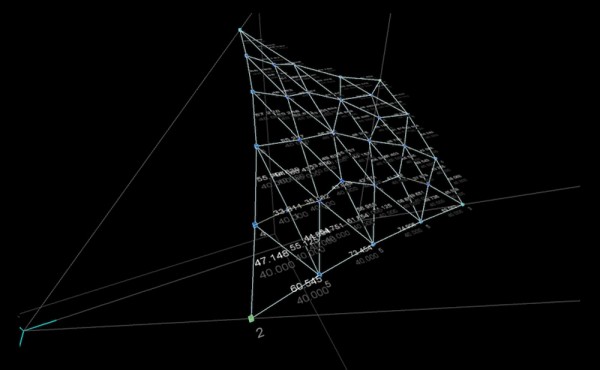
Minimal complexity by Vlad Tenu is an award-winning project from the TEX -FAB competition. The self organizing proposal was superior on multiple counts. Aside from being technically stunning, drop-dead gorgeous, and meticulously detailed, the project embodies the ideas of emergence, modular expansion and growth found in nature. Much more, including images.
Other characteristics of the project that stood out were its overall structural robustness and obvious material efficiency. The design hosts an inherent logic of assembly and is composed of an extremely limited number of different components, yet as you can see, is still capable of composing a highly varied range of space and potential enclosure.
You can find the official press release from the competition here.
Image of the fabricated model:
We got in contact with Vlad, this is what he had to say in explaining the project further:
“‘This project was developed around the design problem of minimal surface structures, in order to create an alternative algorithmic method for generating minimal surfaces as well as for building them from modular components. The alternative characteristic of the study comes from the different approach of the project, as opposed to the existing ones in the field, by using the principle of simulation of virtual soap films in order to generate minimal surface geometries, while optimizing them for a modular fabrication system. The main difference in approach would come from the bottom-up algorithmic strategy of not starting with a predefined topology, as in the case of the dynamic relaxation method for example, but simulating an iterative growth process.
The algorithm is materialized through a concept derived from the principle behind the state of equilibrium of natural organisms, in strict correlation with the conservation of energy. Each iteration is programmed to update the relationships between the components of the system, reapply the defined rules and minimize the energy, in our case the tensional energy in order to achieve a state of equilibrium.
The various tests and prototypes demonstrated that by simply using particle-spring systems it is possible to generate several types of periodic minimal surfaces. From a cellular point of view, if we were to consider the particles as cells or molecules and the springs as the forces between them, the proposed system reaches an emergent quality of self-organization similar to one found in nature”
close up of the design’s structure:
more views:
Some technical illustrations showing the potential of the form making method:
also featured on eVolo







Beautiful and inspiring
looking at nature from the mathematical and structural viewpoint gives unbelievable results in architecture.
Thanks for the posts Ehsan
no problem, great project huh? Very inspiring and beautiful at the same time.
Dear Ehsan,
There is problem while opening photos.
PLease fix it in order to catch them.
Regards
F.H.
Dear Farzaneh,
i took a look at all the images in different browsers and didn’t find the same problem. i believe if you’d like to save on your computer you can open them in a new tab and save image as from there. If not worst comes to worse visit the original tex fab website and try catching them off there.
hope i helped!
Ehsaan